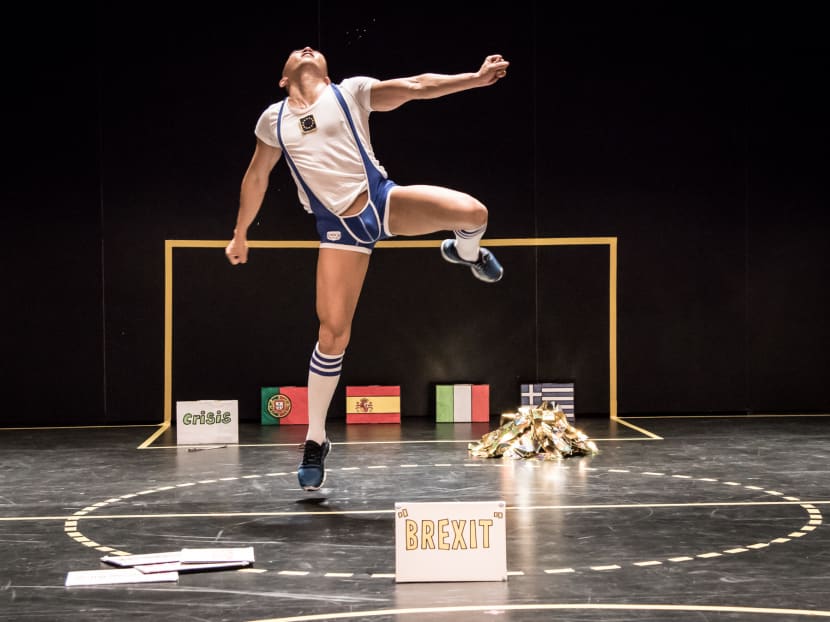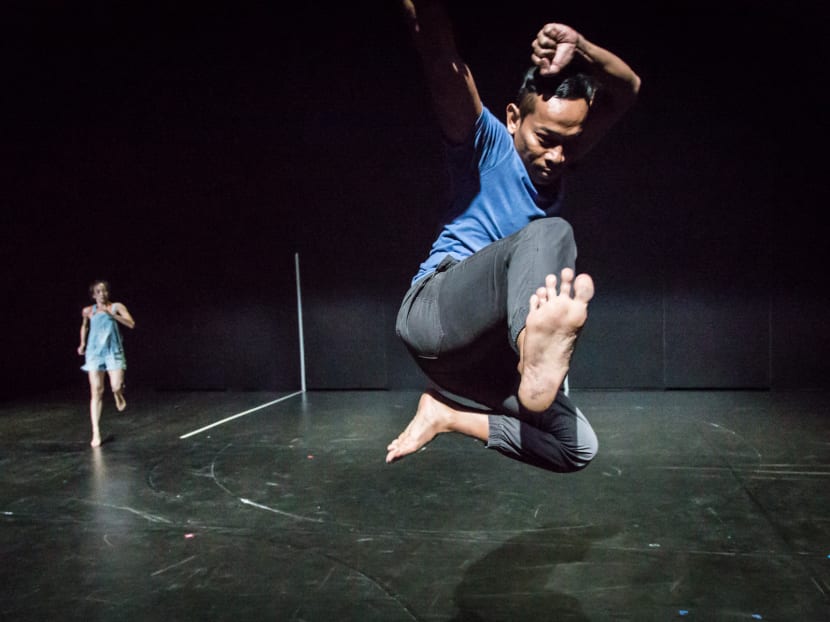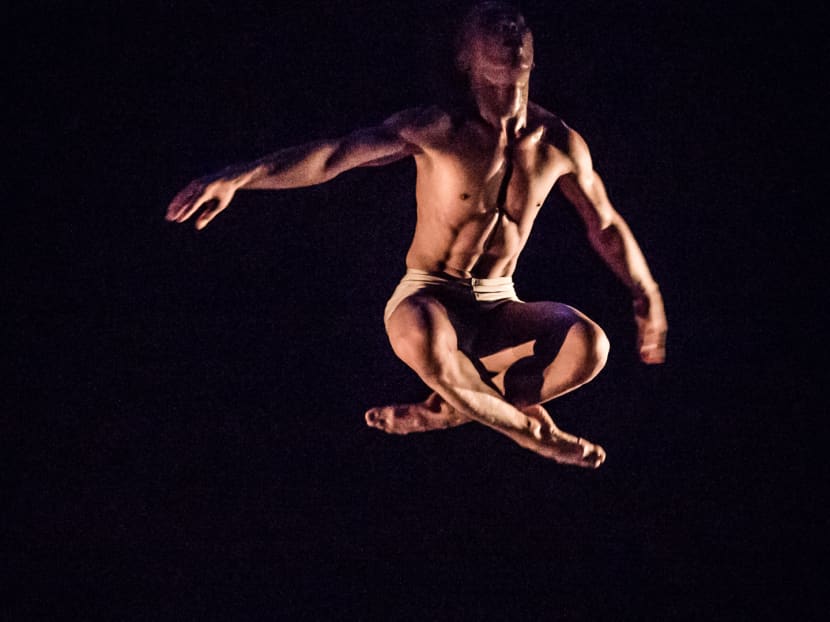Contact 2015: On cheerleaders and zinc sheets
SINGAPORE — Featuring pompoms, a zinc sheet, and esoteric drawings on the floor, M1 Contact Contemporary Dance Festival’s South-east Asian Choreographers Showcase was an interesting selection of works.



SINGAPORE — Featuring pompoms, a zinc sheet, and esoteric drawings on the floor, M1 Contact Contemporary Dance Festival’s South-east Asian Choreographers Showcase was an interesting selection of works.
Friday night’s triple-bill featured Singapore’s Daniel K, as well as Indonesia’s Andara Moeis and Moh. Hariyanto, whose respective works are a study in contrasts.
Moeis’ clean and calculated Untitled (2015) was a diagrammatic piece that, as explained in the programme, riffs off a choreographic tool by Belgian Anne Teresa De Keersmaeker (but not in the same way Beyonce had “riffed off” a De Keersmaeker work, just to be clear).
Two overlapping chalk circles on the floor, and two masking tape lines (from wall to floor) cutting halfway through these circles, define the two dancers’ performance territory. Initially standing still, as if to let these stark lines project movement in a pictorial or painterly sense, the couple then proceeded to enact what’s almost like a series of exercises, as they ran back and forth and did the occasional jump. It was also improvisational and game-like, with the dancers seemingly in the midst of enacting a dare, sharing a secret as they giggle, or playing tag — but never touching — before they returned to the confines of the circles, following its pattern in a half-lit stage and prodded by the sound of seconds ticking down.
Meanwhile, grit and noise was at the core of Moh. Hariyanto’s Ghulur, which was essentially a duet between dancer and a piece of zinc sheet. The latter is a ubiquitous rooftop material in countries such as Indonesia and the Philippines, and is often symbolic of these countries’ frenetic urban condition (Singaporean visual artist Geraldine Kang did something almost similar this year, where construction fence was used as the flooring for her solo show).
It’s an awkward, uneven, and possibly even dangerous, surface on which to perform, and in Ghulur, the performance was primarily horizontal, with the dancer flopping around like a fish, jumping and rolling on the sheet, which in turn created a ruckus.
Unlike the measured sense of control in Untitled (2015), there’s an impression of unpredictability here. The sense of physicality, too, between dancer and sheet, is ever present, compared to the detachedness between the two dancers in Moeis’ piece.
The main highlight, though, is Daniel K’s boisterous Cheerleader Of Europe.
One can trace the piece to his outrageous 2012 work The Cheerleader (which featured former Singapore Biennale/Singapore Arts Festival boss Low Kee Hong in a fat suit), and indeed many elements are back. But the cheerleader-meets-clown vibe is placed in a completely different context, which is that of a Europe besieged by an economic crisis, a crisis of identity, terrorism and war.
Playing out on a modified kind of football pitch-slash-basketball court are a few elements that touched on these. The first, of course, is the question of Daniel K’s role and presence as the titular (Asian) cheerleader for a continent he’s not technically a part of.
It had previously been performed in a few European countries, and it would have been interesting to see how things had played out while he was simultaneously acknowledging the issue of stereotypes in the piece itself.
There was also Daniel K’s personal anecdotes about National Service and giving his bumbling, slacking platoon a rousing pep talk — the martial version of cheerleading, which took on another layer of significance given the increasing sound of war drums over Europe.
And then, there’s the direct reference to the continent itself. Flags are positioned on the pitch/field/court — some, like Greece, Portugal and Spain, were in the “crisis” area, others were outside, while a flag of Syria was placed outside the pitch itself. He also interviewed an audience member from the Netherlands about his views on Europe and being European (not a pretty picture, the visibly affected audience member said).
More cards were shown, with the words “refugee”, “terrorism”, “austerity”. At some point, Daniel K did push ups, one for each European country (in alphabetical order), visibly straining at the effort to urge on this imagined community.
But therein lies the twist: Urge on to what? And it’s the vagueness that’s rather intriguing. As in the first Cheerleader a couple of years back, one doesn’t quite know if it’s sarcasm or sincerity. And perhaps, it just becomes all the more vague considering the audience it played to (again, we can only picture what it would be like playing to European audiences in Europe, i.e, where the stakes are very different).
What was pretty obvious last Friday though, as Daniel K threw glitter at the audience, and his cheerleading antics became more and more outrageous, was the sense of artificiality, emphasised by the awkward pauses in his cheerleading routine (as when he continues to hold up a sign encouraging us to applaud louder long after we’ve stopped applauding) and statements repeated on a loop as if he had become a broken record.
Cheerleader Of South-east Asia, anyone?








